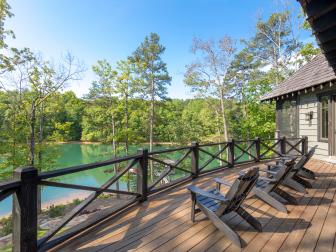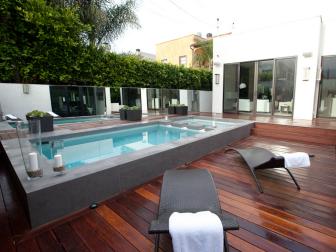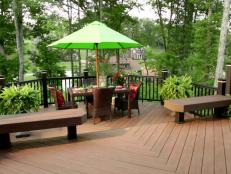Budgeting for a Deck
Wondering how much it’s going to cost to build a backyard deck? Here’s what you can expect to pay, a list of ways you can save and tips on working with a contractor.
There are many factors to consider when determining your budget for your new deck. Naturally, the more elaborate the design and the choice of materials will affect the cost of the deck. Like any commodity, lumber prices fluctuate, and at the time of this writing, they are currently in an upward spiral due to the COVID-19 pandemic. It’s basic supply and demand: Lumber mills were forced to close during the pandemic, reducing supply. But at the same time, a lot of the building industry was still up and running and homeowners were doing more-than-average home improvement projects, resulting in high demand.
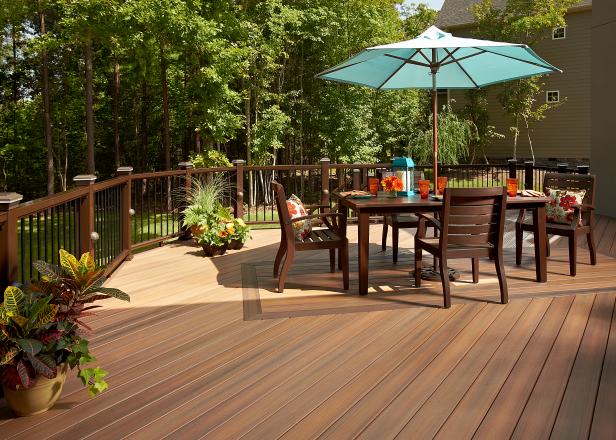
Is Building a Deck Worth the Money?
A new deck will expand your outdoor living space and increase your home's value. According to Zonda 34th Annual Cost vs. Value Report for 2021, home exterior projects have the greatest return on investment (ROI). A new wood deck has an average cost of $17,000 with a 66% ROI and a composite deck averages around $22,500 and has a 63% ROI. These numbers reflect the recent increased costs of building materials that occurred as a result of the pandemic. And even though these increased costs did make the ROI decrease, there is still value in adding a new deck. When weighing the costs, you should also consider the personal value you’ll get from having the extra outdoor living space.
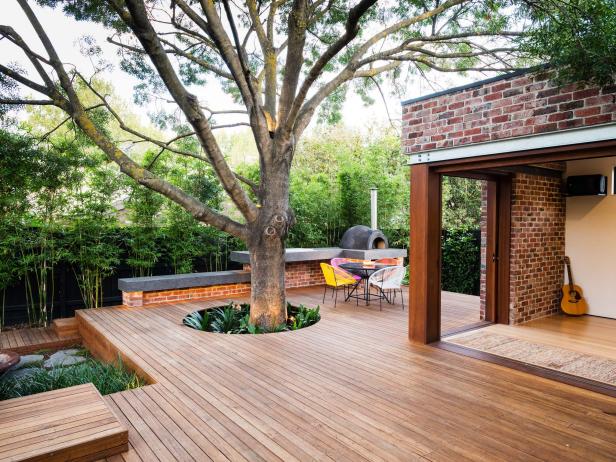
COS Design, photo by Tim Turner
So How Much Does It Cost to Build a Deck?
Before you meet with a contractor, do your homework. Know what you want and do some research to learn the basic components of a deck so you’ll know what all the parts and pieces are called. When thinking about the cost of a deck, start with the three main segments of a deck: framing, flooring and railing.
Framing
Unless your deck is ground-level, it will need support framing in the way of concrete footers, support posts, beams, joists and ledger boards. Ground-level decks will still have framing but may be able to be built on blocks instead of posts that are secured to concrete footings. Framing is almost always built with pressure-treated wood even if your deck flooring and railing are made from other materials. Framing costs will vary depending on size, height and how the deck is attached to your home. Lumber prices also vary by what area of the country you are located in. Expect to pay between $85 and $100 per square foot for the framing. And note: This is about a 100% increase since late 2019!
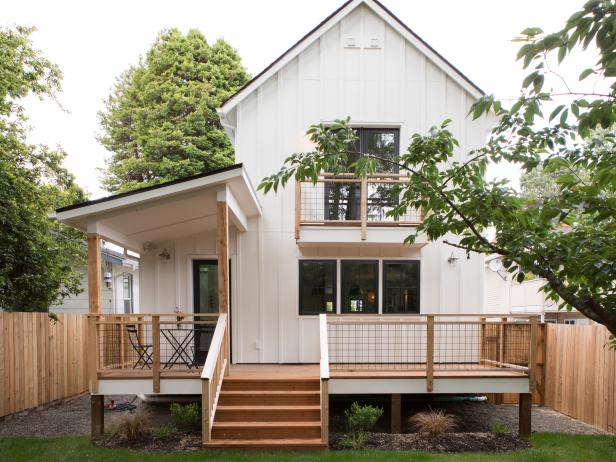
Melissa Kaseman Photography
Deck Flooring
The most common types of deck flooring are pressure-treated wood, composite lumber and hardwoods like Ipe, Douglas fir or cedar. Pressure-treated decking used to be the most cost-effective being about 20% to 30% lower than hardwoods or composite. But with the price changes caused by the pandemic, pressure-treated is now about 5% less than the other two. So, when you factor in the cost of maintenance, longevity and rot resistance, composite or hardwood may likely be your top choice. At the time of this writing, pressure-treated deck flooring is $15 to $25 per square foot while composites and hardwoods range from $15 to $40 per square foot.
If you do go with pressure-treated decking flooring, keep in mind there are two grades of this material. “The higher-grade has no knots and been kiln-dried so it has already shrunk so it can be painted or stained immediately,” according to Michael Berry, a Construction Specialist with Earthadelic, a landscape design firm located in Knoxville Tenn. “Lower-grade pressure-treated wood has to acclimate to its space and climate and you’ll have to wait about six months before you can apply paint or stain.”
Prices vary with composite decking because there are so many options that depend on size, style, and what the composite is made of — they vary from recycled plastics to PVC to wood fibers or a mix of all the above. How composite decks are installed can also vary. Some are fastened to the joists with decking screws, the same as wood, and other composite manufacturers employ a snap-together, tongue-and-groove system. There are more than several manufacturers of composite decking. Your contractor will likely have a favorite they recommend, but you may want to research the styles and warranties offered by various manufacturers.
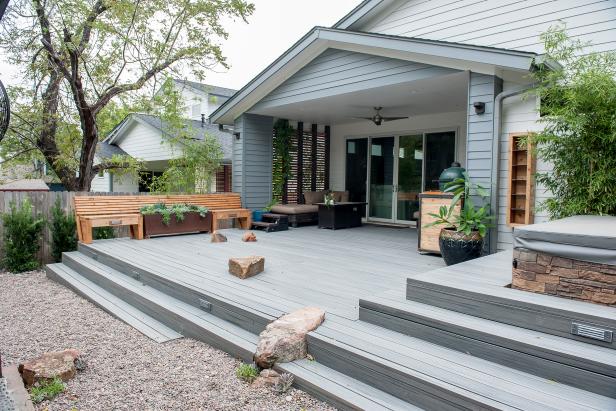
Laura Hajar
Railing
The design choices for railing can also vary greatly. Classic, standard-looking railing with vertical pickets can be made from the same material as your deck flooring. Again, like deck flooring, if you’re going with pressure-treated railing use the higher-grade lumber so it can be painted or stained before it is installed when it’s a much easier task. Other design options will increase the cost of your deck, but again, weigh the upfront costs against the cost of maintenance and its rot- and insect resistance (read: carpenter bees and termites). Options include aluminum, stainless steel cables, glass panels, metal, rough-hewn logs, vinyl, or a combination of any of the above. Deck railings are sold in six-foot sections and can range from $90 to $700.
31 Deck Railing Design Ideas 32 Photos
Sure railing can make your deck safe. But it can also bring a sense of personal style and allow the view to shine through.
Controllable Factors That Affect Price
There are so many considerations that can affect the cost of your deck. Let the contractor know about all your wants and needs before they give you an estimate. This way you know you’re getting a true estimate and you can accurately weigh the costs and options. As you begin to plan your deck build, and before you talk to contractors, ask yourself these questions because they will affect the cost of your new deck.
Layout and Size:
- How big is the deck? Your footprint is going to determine the price.
- Do you want multiple levels? This could increase the price big time.
- If there are staircases, how many and how big are they? The price of a staircase can add up quickly. You may be thinking of two staircases, one at each end of the deck, but one in the middle can save money.
- Is there an existing deck that needs to be demolished? If so, DIYing this instead of having a contractor do it can save money.
- What is the shape of the deck? Curved decking will cost more than straight edges.
Basic Materials:
- What type of decking material?
What type of railing?
Design Add-Ons:
- Will there be integrated lighting? Built-in lighting is practical and stylish, so try to squeeze it into your budget. Ask your contractor about hardwiring electricity for post lights and stair lights. Consider additional lighting on the exterior walls of your home to illuminate the deck.
- Do you want a built-in kitchen area, benches or planter boxes?
- How about a covered area or pergola?
- Will you be needing extra structural support for things like a hot tub?
- Will there be skirting underneath the deck? Do you want the underside of the deck open or do you want to cover it with lattice or another material?
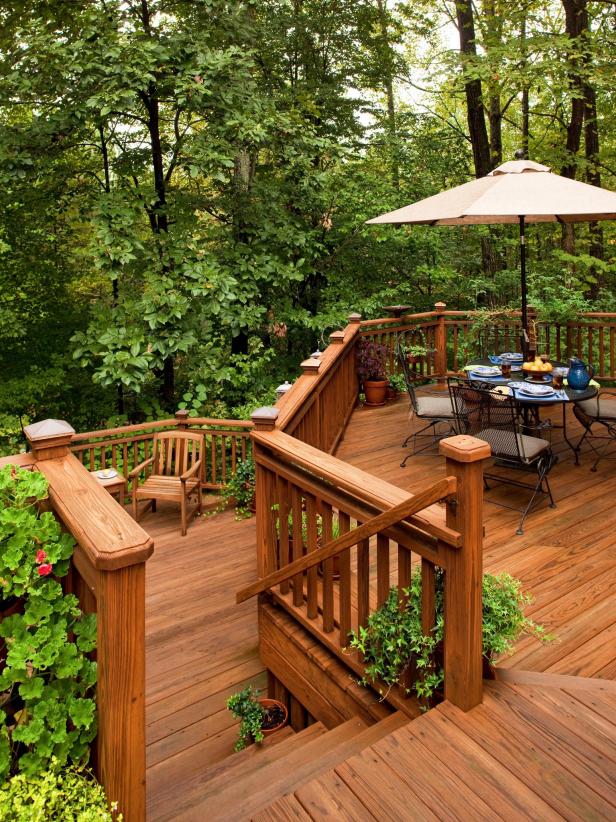
MOSAIC Group [Architects and Remodelers], www.MosaicGroupAtlanta.com
Uncontrollable Factors That Affect Price
Your unique yard and house will determine some of the costs of your deck, but regional factors specific to your environment and climate may also factor into the costs. In northern climates, the concrete footings will need to be dug deeper to hit the frost line (the depth in which the ground freezes). In hurricane, wind or earthquake-prone areas, special building codes will need to be followed.
- What type of foundation is needed? The height of the deck, the frost line and local codes will determine this.
- How far off the ground does the deck need to be? Obviously, the higher it is, the more material will be needed.
- Does the deck need to be attached to the house? A freestanding, ground-level deck is less expensive to build than one attached to your house. Also, if you are attaching the deck to the house, additional framing may be needed on the home to make sure the structure is secure and up to building codes.
Dream Decks and Patios 46 Photos
Whether seeking solitude or a great place for entertaining, find inspiration in these outdoor spaces.
Hiring a Contractor
You’ll want to get at least three estimates for the deck, and don’t just rely on online estimates. Have the contractors come to your house so they can take accurate measurements, see if there any obstacles that may affect the layout of your deck. To help the contractor provide you with an accurate estimate, know what you want. The first thing to ask the contractor: Are they licensed and insured?
Compare Apples to Apples
When it comes to deciding on which contractor to choose, make sure you’re comparing every aspect of their estimates, don’t just look at the final cost. “Look at the layout and outline of the framing. The joists should be run 16 inches on-center (16 inches apart),” explains Michael. “Some companies will lay them 20 inches apart which can cause the deck to bow and move when you’ve got a crowd on it.” If the contractor does want to span the joists 20 inches apart, make sure they install bridge pieces in between the joists and the deck flooring is sturdy enough to make up for the lack of structural support.
Also, check the size of the lumber on each estimate: Are the posts 4x4, 6x6 or 2x4s sandwiched together? How deep are they digging the post holes? How thick are the deck boards, beams, and fascia boards? Ledger boards should be bigger or at least the same size as the joists.
Other questions to ask:
- Does the price include staining or finishing?
- What type of lumber?
- Does the contractor provide any type of warranty?
- Does the price include permits and inspection?

Topaz Design Group, Inc.
DIYing a Deck
Research your local building codes and get a permit if needed. It is usually necessary for a deck over a particular height and square footage. Permits average about $500. You’ll also need to have your city or town building inspector or structural engineer inspect and sign off that the deck is compliant with local building codes — this is known as a certificate of occupancy. Don’t skip the permits or certificate of occupancy; not having these can come back to haunt you if you have an insurance claim or when you sell the home.
When estimating the costs of materials for your DIY deck, you’ve got more than lumber to consider; other building materials have also gone up in price. You’ll have to factor in the cost of fasteners, joist hangers, post anchors, concrete, concrete tubes and stain or paint; all of these can easily add up to several hundred to more than a thousand dollars.










